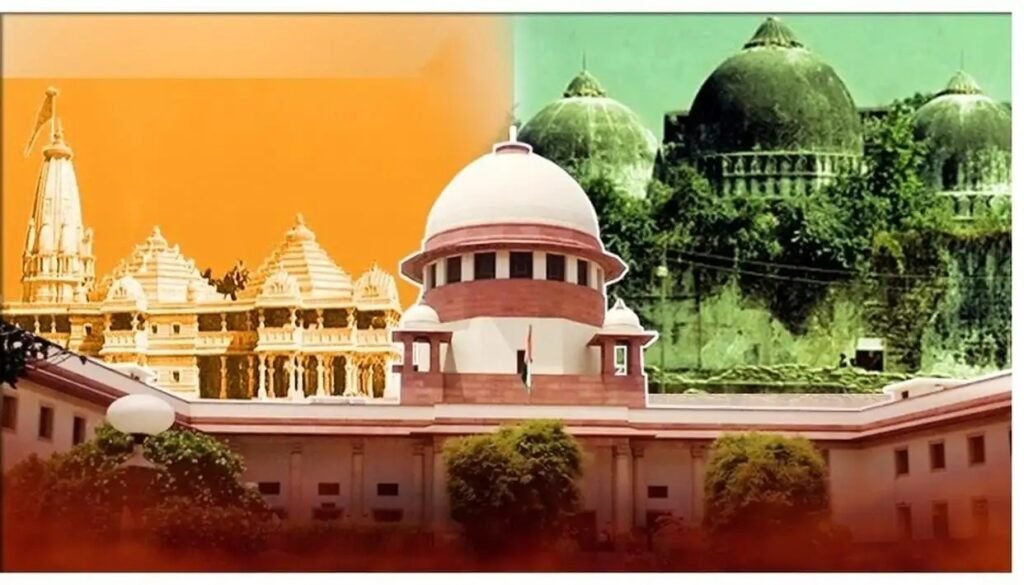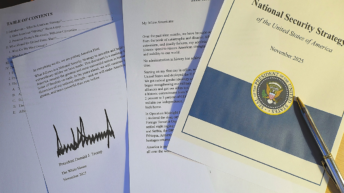
The anniversary of December 6 this year will likely pass unnoticed, subsumed by the farmer blockades of major highways leading to the capital, ostensibly in protest against laws that had long been demanded by farmers’ unions themselves. This follows a little noticed precedent set on December 4, 2019, when protests began against the proposed Citizenship Amendment Bill, on utterly specious grounds. The Bill was passed on December 12, 2019, but the agitators blocked several roads from December 2019 to March 2020; there were grisly incidents of violence in north-east Delhi where at least 53 persons died, and a sit-in at Shaheen Bagh in which at least one child died of exposure to the cold.
The high decibel protests against the Citizenship Amendment Act (CAA) sidelined the December 6 anniversary of the demolition of the disputed structure at Ayodhya in 1992, which lost traction after a five-judge bench of the Supreme Court of India, on November 9, 2019, ruled that Ramlalla is the legitimate owner of Janmabhumi site. Few noticed that the judgment coincided with the Vishwa Hindu Parishad’s shilanyas ceremony on November 9, 1989.
There was never a cogent case against the restoration of the Ram temple site to the God’s devotees. Unknown persons planted murtis of Ramlalla and family inside the central dome of the Babri structure on December 22-23, 1949. This led to the site being declared a disputed property on December 29, 1949, though Hindus were permitted darshan from a side gate as the deity had to be worshipped daily.
This stalemate ended on February 1, 1986, when the Faizabad district magistrate ordered opening the gates for proper worship. In response, the Babri Masjid Action Committee (BMAC) was set up at the instance of Ali Miyan, president of the All India Muslim Personal Law Board. The Bharatiya Janata Party adopted the cause at Palampur (Himachal Pradesh) in 1989, and party president Lal Krishna Advani launched the Somnath-to-Ayodhya rath yatra on September 25, 1990.
The movement saw many ups and downs, including the firing on Ram bhakts in Ayodhya in 1991. This set the stage for the frenzied mob action on December 6, 1992, which led to another stalemate at the site.
Nevertheless, there was some action also. In 2003, Canadian firm Tojo Vikas International informed the Allahabad High Court that ground-penetrating radar showed a huge building below the site. This prompted the court to direct the Archaeological Survey of India (ASI) to excavate the site, a task accomplished under Dr. B.R. Mani. It found a “north Indian temple” under the structure.
It is pertinent that Syed Shahabuddin, convener, BMAC, publicly asserted that the Muslim side would hand over the land to the proponents of the temple if it could be proved that the mosque was built over a preexisting temple. But when the evidence piled up, Leftist historians from some prominent universities jumped into the fray and prevented an amicable settlement. The BMAC reportedly held several meetings in the premises of the Indian Council of Historical Research (ICHR), as stated by former members. Prominent Leftist historians insisted that there was no Ram temple in Ayodhya and that the city was actually a Buddhist or Jain centre. They convinced orthodox Muslim groups to derail all possible solutions to the dispute. Some participated in a number of government-level meetings and persuaded the BMAC to remain adamant. As Syed Ghayorul Hasan Rizvi, chairman of the National Commission for Minorities, lamented, “The Muslim community is ready to give up the Babri mosque claim, but their leaders are not.”
Unsurprisingly, throughout the court case, the Babri proponents offered endless arguments and “pieces of evidence” outside the courtroom, but failed to prove any claims within the courtroom. On September 30, 2010, the Allahabad High Court ruled that the central dome of the demolished structure was built over the birthplace of Sri Ram. It awarded the disputed land to Ram Lalla Virajman, represented by the Akhil Bharatiya Hindu Mahasabha. However, the Nirmohi Akhara and Sunni Muslim Wakf Board were each granted one-third share of the plot as relief under Article 142 of the Constitution. Dissatisfied, all parties appealed to the Supreme Court where the matter languished.
In October 2018, the apex court took up the matter and ruled that the dispute would be treated as a title suit (ownership dispute). After further twists and turns, including an impeachment threat against Chief Justice of India Dipak Mishra, a five-judge Bench was set up on January 8, 2019, and the first hearing held on January 10, 2019.
Finally, on November 9, 2019, the Supreme Court rang the curtain down on the 491-year struggle for the birthplace of Sri Ram. In a unanimous verdict, Chief Justice of India Ranjan Gogoi announced that the entire 2.77 acre plot belonged to Ramlalla Virajman and the Ram Janmabhumi Nyas. The verdict was based on evidence and not faith (of either side). The Bench held that the Hindu litigants could establish that they were in possession of the outer courtyard, while the Muslim side was unable to prove exclusive possession of the inner courtyard.
Chief Justice of India Ranjan Gogoi deserves credit for leading a Bench including Justices S.A. Bobde (CJI-designate), D.Y. Chandrachud, Ashok Bhushan and Abdul Nazeer to deliver a unanimous verdict on a dispute that has simmered for five centuries. He also ensured that the 1045-page judgment was owned by the entire Bench and the name of the judge who wrote the judgment withheld.
The apex Court granted the Sunni Wakf Board an alternative five acres of land for a mosque at an appropriate place in Ayodhya. This was graciously accepted and documents for a plot in Dhannipur village were given to the Board, but physical possession has been delayed due to the Covid crisis.
The verdict was welcomed by most political parties including the Bharatiya Janata Party, Congress Party, Bahujan Samaj Party, Shiv Sena, and others. RSS and VHP leaders stressed that the verdict was neither a victory for one side nor a defeat for another side.
Equally creditworthy is the grace with which the Muslim community accepted the verdict. Zufar Farooqui, UP Sunni Waqf Board chief, promptly overruled Zafaryab Jilani who had saidthat they would file a review. Firangi Mahal and other organisations welcomed the verdict. For long, Muslims have conceded the merits of the Janmabhumi case and desired to return the site peacefully.
Interestingly, once the Left felt that Ayodhya was a lost cause, it wasted no time in directing the cavalry towards the Citizenship Amendment Bill/Act. Now, farmers are besieging the capital and the usual suspects (Yogendra Yadav, Kavitha Krishnan, Medha Patkar et al) can be seen rallying the troops.
After the shock (to them) victory of the BJP in 2019, it is now Mission 2024 for the Left. Ayodhya is a dud cheque now; CAA is already a non-issue, and the farmers’ protests will also wither away. But every few months up to 2024, some ‘Arab Spring’ type of event will grab the headlines. The only question is which group allows itself to be led up the garden path.





awesome post
A true historical sketch, worthy of being included in informal programmes in educational institutions, less the last paragraph. The nation should stay prepared for a long series of wonky props from the shipwrecked political non-entities. Thanks for sharing the write.